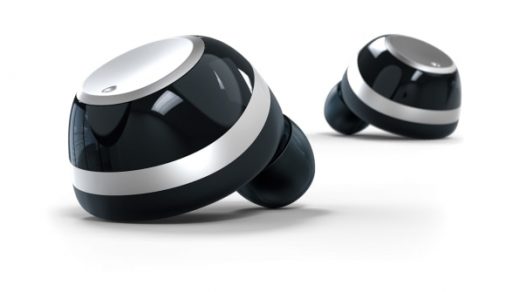Consumer Tech Companies Want To Make Hearing Aids Cheaper—And Even Trendy
Few in the tech world understand the concerns of the hearing impaired as well as KR Liu. For two decades, she’s worked in sales and marketing for consumer electronics companies including Speck, Pebble, and now the San Francisco-based wireless earbud maker Doppler Labs. She also has severe hearing loss, has worn hearing aids for nearly four decades, and serves as an advocate for organizations like the Hearing Loss Association of America and World Wide Hearing.
Liu combines both passions in her latest effort: advising U.S. lawmakers on new legislation that would, for the first time, open up the hearing aid market to companies such as Doppler Labs. The Over-the-Counter Hearing Aid Act of 2017, which is expected to pass both houses of the U.S. Congress by the end of July, would allow any consumer electronics company to sell hearing aids without prescriptions and with only minimal regulation by the Food and Drug Administration.
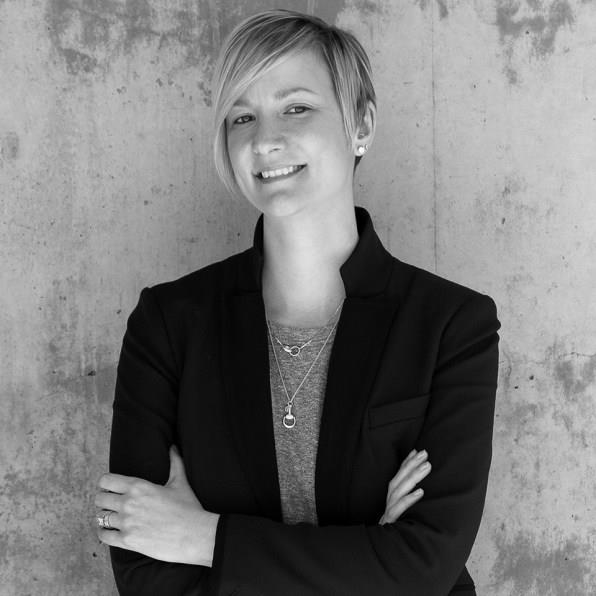
For a Congress embroiled in a bitter battle over health care reform, the legislation is a refreshing bipartisan effort, led by Democrat Elizabeth Warren and Republican Chuck Grassley in the Senate and Democrat Joseph Kennedy and Republican Marsha Blackburn in the House. (Though the bipartisanship of their efforts has recently come under attack from the conservative nonprofit Frontiers of Freedom.) Their goal: encourage new competition and innovation in a market that has been dominated by a handful of specialized companies. Their efforts could catalyze a sea change in the cost and design of devices for people with mild and moderate hearing loss.
Liu’s high-end hearing aids, made by Minnesota’s Starkey Hearing Technologies, are an extreme example of how expensive such devices can get: She paid $10,000 for her pair, which she bought through an audiologist. But even the average price for hearing aids in the U.S.—$4,700 a pair—is overwhelming in a country where very few private or public health insurance programs cover the devices.
Pricing is one major area of contention, since what a patient pays is usually set by the audiologists who sell hearing aids, not the companies that make them. Starkey, for instance, estimates that audiologist typically sell a pair of the Halo 2 hearing aids Liu wears for between $3,000 and $6,000.
“People shouldn’t have to suffer because of cost or how [their device] looks,” says Liu. By easing access and encouraging innovation, Liu looks forward to a day when hearing aids are more accepted, even fashionable. “I want [hearing aids] to be as cool as glasses. I want people to have 20 pairs,” she says. “I want Alexander McQueen to make one.”
There’s a long way to go—in terms of technology and attitudes—before hearing aids get the runway treatment, but the process will likely start soon. The U.S. House and Senate have attached their bills to must-pass FDA funding legislation that could clear Congress by the end of July. And consumer electronics companies are ready to rush in. Liu and representatives from audio makers such as Bose, Etymotic Research, RCA, and Sennheiser have lobbied and in some cases consulted with lawmakers on the bill’s language. “We have a broad number of companies large and small that have been very interested in the development of [over-the-counter hearing aids],” says Tiffany Moore, VP of government affairs for the Consumer Technology Association (CTA), the tech industry group that puts on the CES show every January.
It’s no wonder: 48 million Americans (or 20% of the population) have hearing loss in at least one ear, but just 14% of them have hearing aids—leaving a potentially huge untapped market. The battle for it has already begun.
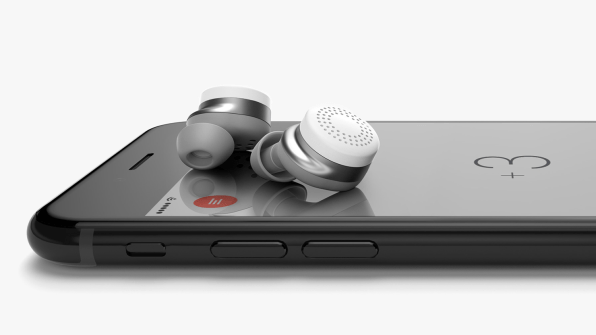
Opening The Floodgates
One of the first over-the-counter products to hit the market will likely be a twist on Doppler’s $300 Here One buds, which launched in February. The combination wireless earbuds and smart device is able to take in ambient sound through microphones, then filter out background noises and enhance speech—doing essentially what a hearing aid does. Liu joined the company in 2015 with a goal of bringing this kind of technology to people with hearing impairment. “We really believe that accessibility and reaching those consumers is important,” she says, “but we haven’t been able to [reach them] due to regulation.”
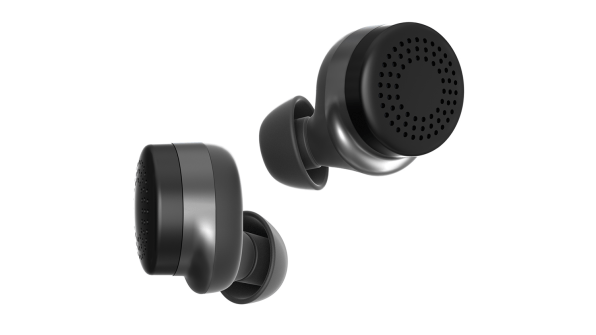
Under existing laws, hearing-aid manufacturers have to be certified by the FDA as medical device makers. After that, they can avoid the hassle of getting FDA approval for individual devices as long as their products are “substantially equivalent to other hearing aids out there in the market,” says Dianne Van Tassel, an audiologist and senior scientist at Bose who also consulted with Congress on the new legislation. It’s a requirement that doesn’t exactly encourage innovation.
Gadgets such as Doppler’s Here One and Bose’s similarly audio-enhancing Hearphones, meanwhile, are classified as personal sound amplification products, or PSAPs, which prohibits them from being marketed as helpful to people with hearing impairments. It’s a distinction that many advocates view as arbitrary. “Even the FDA acknowledges that you could have two identical devices,” says Van Tassel, one called a hearing aid and the other a PSAP. Some companies have dubbed their products with the slightly less awkward moniker “hearables”—a riff on fitness trackers’ “wearables.” (German startup Bragi includes fitness-tracking sensors in its wireless earbuds.)
Even under these restrictions, PSAPs are growing quickly. According to a new report from the CTA, some $225 million worth of PSAP devices will be sold in 2017—a 40% increase from last year. And CTA expects the category to grow another 50% in 2018, due to greater awareness that comes with the new legislation.
Not every PSAP makes for an appropriate hearing aid—yet. Traditional aids feature specialized technology foreign to most consumer electronics companies, especially in power efficiency. The Starkey Halo 2 aids that Liu wears, for instance, are designed to run for a week at 16 hours a day, including three hours of wireless audio streaming from a smartphone. During that time, they monitor 24 audio frequency ranges every six milliseconds, selecting the right algorithm to apply to each. Doppler’s Here One buds currently last just two to three hours before they need a recharge. “What we’re doing is giving people who need help in certain situations access to technology that can help them,” says Liu. “That’s the first step.”
The situation is similar with Doppler’s smaller competitor, Australian company Nuheara. Its $300 IQbuds, which do essentially the same thing as Here One, run four to eight hours per charge. “Does that mean [people with hearing loss are] going to want to wear IQbuds all the time like they wear a hearing aid?” asks Nuheara’s cofounder David Cannington, who’s stationed in the Bay Area. “Probably not.” But Cannington believes there’s a market for entry-level hearing aids that provide part-time help in challenging situations.
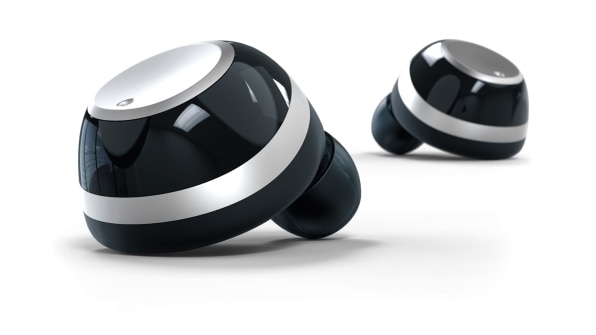
With its size and name recognition, the Massachusetts-based Bose is in the best position to make hearing aids a mainstream consumer product. The company’s $500 Hearphones, which quietly launched last year, also help users reduce sounds and amplify conversations. (Doppler is suing Bose for trademark infringement, claiming “Hearphones” sounds too much like Doppler’s Here One buds.) The device is oddly conspicuous, though, consisting of a neckband that holds the electronics and two wired earbuds. Given how often Van Tassel mentions wireless earbuds in our conversation, it seems likely that Bose will progress to more compact products aimed at the over-the-counter market. Also telling: Van Tassel spent six years as director of advanced research at Starkey.
And then there’s Apple. The company’s wireless AirPods have already made it acceptable to have something sticking out of your ears (despite jokes about how easy they are to lose). Apple hasn’t said anything about adding hearing assistance, but the company prides itself on offering accessibility technology to users. If tastemaker Apple were to add speech enhancement to future AirPods, the stigma of hearing aids might go away instantly.

The Battle For Moderates
If you’re over 40 years old, there’s a good chance you have mild hearing loss, or difficulty making out conversations in crowded places. And if you go to a lot of rock concerts, shoot guns, or work around noisy machinery, you may get the condition a decade or more earlier. “I played drums for 20 years. I got my hearing tested. It was far from perfect,” says Doppler’s 30-year-old CEO Noah Kraft.
At 46, I have borderline mild hearing loss for high frequencies (sounds like the letters “f,” “k,” and “th”), according to a test administered by Kyle Acker, an audiologist and director of regional sales for Starkey. “With this type of loss, are you noticing it? Probably not,” says Acker. “Maybe in noise you have a little bit of challenge.” He fitted me with the same Halo 2 model that Doppler’s Liu wears. It was shocking at first to pick up high-pitched sounds I’d forgotten exist, such as the clicking of my keyboard, the sound of my hand brushing over a couch pillow, and the crispness in people’s voices (especially in bars and restaurants).
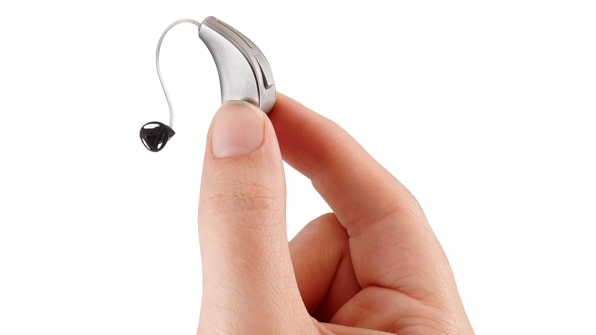
The downsides include a slightly unnatural sound in other frequencies, the funky feeling of having the earpiece portion shoved down my ear canal, and frankly, my apprehension of being perceived as an old geezer. (Although, with all but a thin, clear tube tucked behind my ears, no one noticed the devices.) Had I severe hearing loss like Liu, I’d consider the Halos a godsend, but I still might not be able to scrape the money together for a pair. It’s no wonder that most people with mild hearing loss don’t get, or even think about, hearing aids.
Doppler and Nuheara (and likely Bose) are betting that people with mild impairments will spring for much cheaper consumer electronics devices—ones that announce their presence as accessories. (Consider how giant, colorful headphones have become a fashion statement.) In my tests, I found both Here One buds and IQbuds helpful—especially for enhancing conversations. Were it not for the crummy battery life, I would have bought the Here One, whose design I prefer.
Starkey president Brandon Sawalich—the current chairman of the board of the Hearing Industries Association, which includes the major hearing aid makers—is willing to go along with this idea, to an extent. “Our position at HIA is [that over-the- counter devices should] focus on the mild hearing loss,” he says. “You have over 40 million people with hearing loss. Three-fourths of hearing loss is in the mild category, and it has less than 10% market penetration.”
He draws the line, though, at selling OTC devices to individuals with moderate hearing loss—people who have trouble making out conversations in normal environments, not just places like crowded bars. They are the main target of this new legislation, however. “If you didn’t include moderate hearing loss, then it would negate the benefit for senior consumers,” says the CTA’s Moore. “Almost half of them wouldn’t be able to benefit from the new category of over-the-counter devices.”
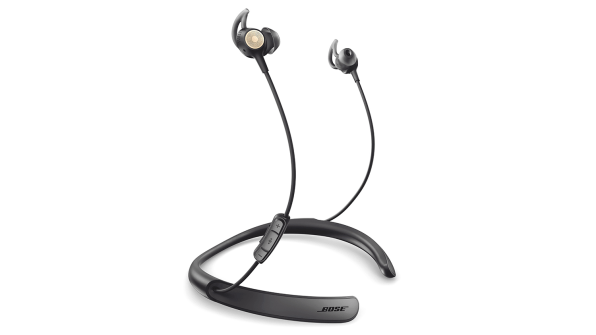
At the heart of this debate is the question of whether a hearing aid can be a plug-and-play device. “A hearing aid is a tiny computer that is customized to you because each ear is different [and] every hearing loss is different,” Sawalich explains. To customize a hearing aid—a process called fitting—an audiologist traditionally tests a person’s ability to hear different frequencies, at different volumes, in each ear. The audiologist uses the resulting audiogram (the aural equivalent of an eyeglasses prescription) to tune each aid to a patient’s ear. That typically means you can’t get a hearing aid from any of the big manufacturers without a bundled service program—and it’s nearly impossible to tell how much you’re paying for the device versus the doctor.
Advocates for over-the-counter hearing aids say the new legislation could substantially bring down costs by encouraging a DIY approach to fitting. “The over-the-counter hearing aid has to, by definition in the bill, include tools, tests, or software that allow the user to control it and customize it to their own needs,” says Van Tassel.
Hearing aid maker Sound World Solutions already sells its devices directly to consumers online, no professional audiogram or fitting needed (something the FDA recently made easier to do). Its hearing aid costs $449 each, or $735 per pair. Instead of an audiologist, SWS relies on a smartphone app to help users adjust their hearing aids. “Our devices are handled by consumers directly,” says Shawn Stahmer, the company’s VP of business development, “and they are doing just fine.”
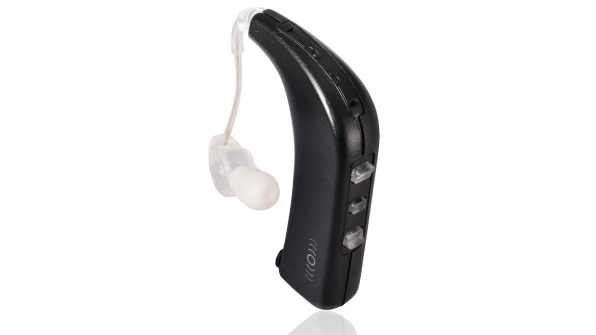
Over-the-counter devices would rely on similar methods for customization. Doppler already has an app that personalizes its Here One buds using a simplified version of the hearing test Starkey gave me. The Nuheara and Bose apps lack a hearing test but do allow manual adjustments. “There is so much opportunity for innovation,” says Van Tassel. “[A customization app] can run all the way from several different presets that people choose from . . . to a couple of simple little controls that under the hood are very complex, that gets them quickly to the settings that are appropriate for their hearing.”
Sawalich is skeptical of this approach. “Somebody’s going to buy [a device] over-the-counter and stick it in their ear, and they’re going to be happy?” he asks. “When you’re asking the hearing impaired to self-diagnose and self-treat without any proper studies or science behind this, this is not what’s best for the patient,” he says. If the new legislation passes, as it likely will, there could soon be lots of case studies showing whether or not DIY fittings work.
Blurred Lines
By setting their sights on users with both mild and moderate hearing loss, Doppler, Bose, and other companies are inexorably blurring the line between professional-grade devices and lifestyle products. Even Kyle Acker of Starkey acknowledges that hearing aids are converging with earbuds and headphones. The new Dash Pro wireless earbuds that his company helped develop with Bragi have both fitness-tracking capabilities and a “clear audio” function that allows users to either block or let through outside sounds. Acker says he imagines a day when customers can say, “I have a hearable and I have hearing loss. So I’m going to take my hearable to my audiologist, and maybe they can make it amplify.” If and when that happens, “hearing aid” may well become simply one of the many features built into mainstream earbuds or headphones.
Liu has a slightly more personal vision of the future. She says that one day she hopes to look around a cafe and realize that “you’re wearing a pair, you’re wearing a pair, you’re wearing a pair. And no one cares if I have hearing issues!”
Fast Company , Read Full Story
(165)

